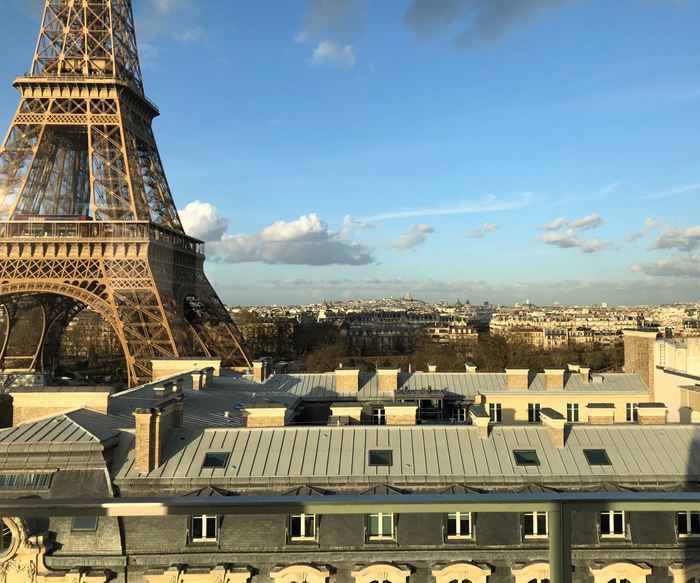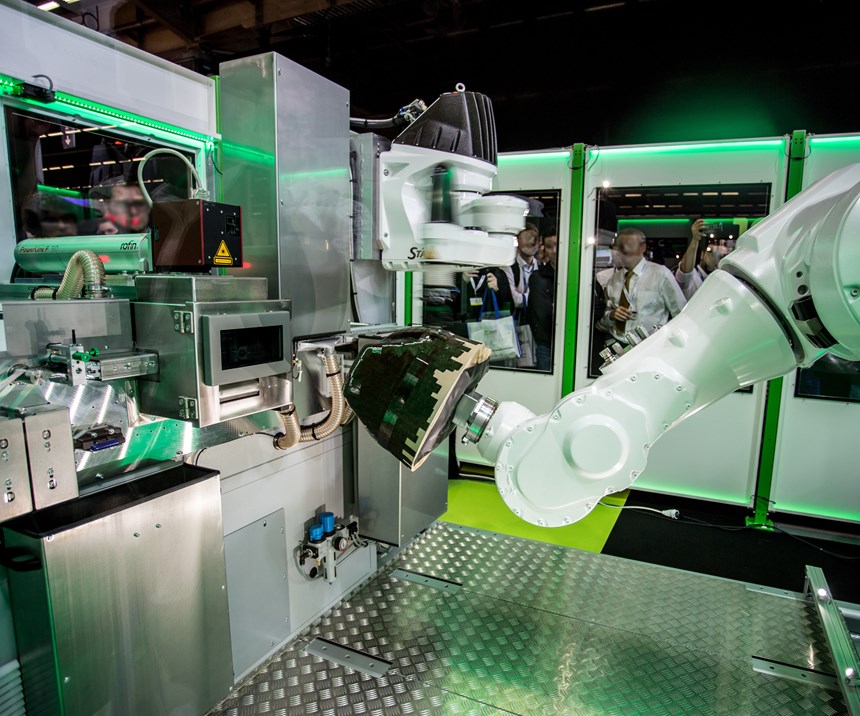SAMPE Summit 19 Paris
SAMPE Europe hosted its annual summit at Pullman Hotel Paris Tour Eiffel on March 11, prior to JEC World 2019.
Share
SAMPE Europe (Oerlingen, Switzerland), the European chapter of the Society for the Advancement of Material and Process Engineering (SAMPE, Diamond Bar, Calif., U.S.), hosted its annual summit at Pullman Hotel Paris Tour Eiffel (Paris, France) on March 11, prior to JEC World 2019. Around 160 attendees gathered to hear 12 speakers cover a range of topics including materials & processes, automotive, mass transport and aerospace. Speakers included:
- Dr. Sansan Ding of CRRC Qingdao Sifang Co. (China), who spoke about CFRP for rail vehicles. The CRRC is exploring the future application of composite materials in the sector driven by the expectation that China will exceed 30,000 km of high-speed rail (HSR) and more than 3,800 sets of high-speed trains by 2020. The CRRC is working to develop next-generation carbon fiber metro trains and anticipate a 30 percent reduction in weight of train by using carbon fiber-reinforced polymer (CFRP).
- Dr. -Ing. Thomas Henke of BMW Group (Munich, Germany) who addressed recent development in the field of CFRP in automotive applications. He indicated that most opportunity for composite structures within automotive seems to lie in the lightweighting of electrified vehicles and autonomous vehicles, which leads to improvements in range of the vehicle.
- Thorsten Gröne of Cevotec (Munich, Germany) who discussed the company’s fiber patch placement additive 3D fiber lay-up technology for complex composites, which enables high-complexity parts with cost-efficiency and volume capabilities. (Learn more about the technology in “Cevotec extends Fiber Patch Placement to sandwich structures, large aerostructures and enables combining with AFP” by Ginger Gardiner).
- Chantal Fualdes, head of Airframe Certification at Airbus (Toulouse, France), who discussed the efficiency of aerospace composite structures manufacturing. According to Fualdes today’s 80 percent reduction in fuel burn and CO2 correlates with increased use of composites.
- Dr. Emiliano Frulloni, Group CTO, Gurit, Switzerland (Zurich, Switzerland) who discussed a new low heat release epoxy for mass transport applications.
- Dr. Andreas Erber, Head of Aerospace SGL Carbon, Germany who discussed fiber placement materials & processes to address high volume production.
- Dr. Leslie Jay Cohen, HITCO Carbon Composites Inc. (Gardena, Calif., U.S.) who discussed non-destructive testing with relation to the digital thread.
- Prof. Dr. Takashi Ishikawa, National Composite Center Japan, Nagoya University (Nagoya, Japan) who discussed the development of a car chassis using LFT-D carbon/thermoplastics and welding technology.
- Axel Seifert, Plastic Omnium New Energies, Belgium who discussed hydrogen storage for Fuel Cell Electric Vehicles (FCEVs).
- Per Mårtensson, CSO Bcomp (Fribourg, Switzerland) who discussed natural fiber composite opportunities in automotive.
- Rob Lokate, Pontis Engineering (Amsterdam, Netherlands) who discussed development of a lightweight bike for the Dutch Olympic team.
- Mr. Oleksandr DONETS, president, ANTONOV State-owned Enterprise (Ukraine) who discussed composites in freight aeroplanes.
This year’s event also celebrated SAMPE’s 75th anniversary and included a film about SAMPE’s history and its role in the industry featuring testimonials from industry experts as well as up-and-coming advanced materials talent.
The conference keynote was delivered SAMPE North America president Karin Anderson, who shared highlights from the SAMPE Materials Forecast Forum which was conducted by SAMPE North America during 2018. Timed with SAMPE’s 75th anniversary, the study involved representatives from OEMs, government organizations, academia, research facilities and young professionals and was aimed at gaining insight into what the materials community might look like in the future.
Learn more at nasampe.org.
Related Content
McLaren celebrates 10 years of the McLaren P1 hybrid hypercar
Lightweight carbon fiber construction, Formula 1-inspired aerodynamics and high-performance hybrid powertrain technologies hallmark this hybrid vehicle, serve as a springboard for new race cars.
Read MoreCryo-compressed hydrogen, the best solution for storage and refueling stations?
Cryomotive’s CRYOGAS solution claims the highest storage density, lowest refueling cost and widest operating range without H2 losses while using one-fifth the carbon fiber required in compressed gas tanks.
Read MorePlant tour: Teijin Carbon America Inc., Greenwood, S.C., U.S.
In 2018, Teijin broke ground on a facility that is reportedly the largest capacity carbon fiber line currently in existence. The line has been fully functional for nearly two years and has plenty of room for expansion.
Read MoreASCEND program update: Designing next-gen, high-rate auto and aerospace composites
GKN Aerospace, McLaren Automotive and U.K.-based partners share goals and progress aiming at high-rate, Industry 4.0-enabled, sustainable materials and processes.
Read MoreRead Next
Developing bonded composite repair for ships, offshore units
Bureau Veritas and industry partners issue guidelines and pave the way for certification via StrengthBond Offshore project.
Read MorePlant tour: Daher Shap’in TechCenter and composites production plant, Saint-Aignan-de-Grandlieu, France
Co-located R&D and production advance OOA thermosets, thermoplastics, welding, recycling and digital technologies for faster processing and certification of lighter, more sustainable composites.
Read MoreAll-recycled, needle-punched nonwoven CFRP slashes carbon footprint of Formula 2 seat
Dallara and Tenowo collaborate to produce a race-ready Formula 2 seat using recycled carbon fiber, reducing CO2 emissions by 97.5% compared to virgin materials.
Read More
























